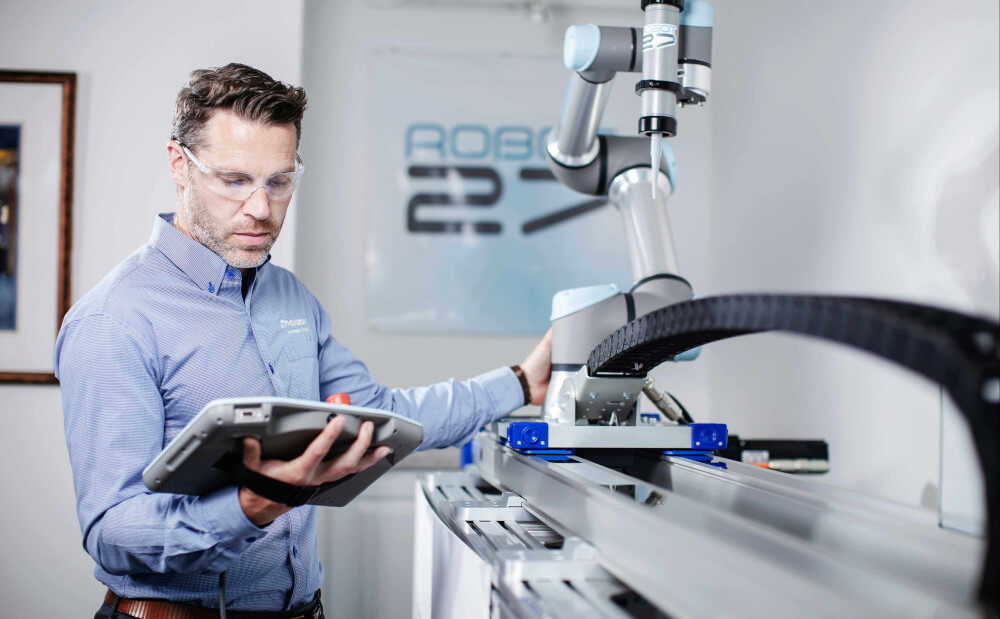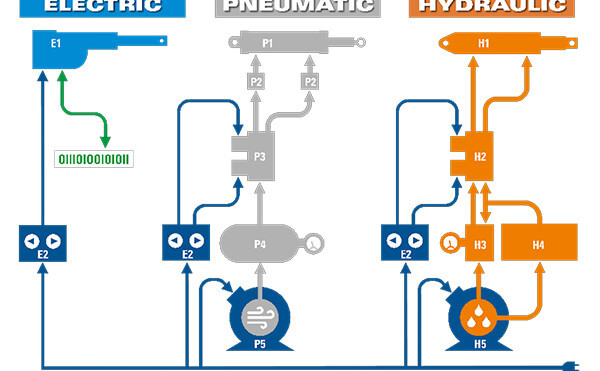Achieve optimal efficiency of your drivetrain!
This is a frequently heard comment. Not only because of lower energy consumption, but also for technical reasons and even relevant when the application runs on batteries. An optimally efficient drivetrain results in lower heat production and often a more compact solution.

The drive train
A drivetrain consists -simplified- of a motor, gearbox, and the mechanics of the movement itself. We start with the latter. A relevant factor influencing efficiency is often friction. Less friction means less peak power or torque required during acceleration and constant speed rotation. However, more power or torque is needed during deceleration. In some applications, less friction even results in a smaller motor. The big advantage of low friction is the improved controllability of the system with more precise movements and shorter setting times.
Gearbox
A motor often runs faster and generally delivers less torque than required. To compensate for this mismatch, a gearbox or reduction is used. The selection criteria are the output torque, the radial and axial forces, and certainly the efficiency.
For worm gearboxes, the efficiency mainly depends on the gear ratio; the higher the ratio, the lower the efficiency. Gearboxes with very high efficiency are bevel gearboxes and planetary gearboxes. Some gearboxes require grease lubrication or high protection levels (e.g., IP67). Keep in mind that some types of grease and seals can reduce efficiency.
Other applications do not require a gearbox. The mentioned mismatch is compensated by using a torque motor, which runs at a much lower speed and generates significantly higher torque.
Motor
The most commonly used motors at Eltrex Motion are servo motors. They are used with their rotating shaft for both rotary and linear movements. In addition to very high efficiencies, they are compact and preferred for dynamic applications. There are also high-efficiency linear motors. A mechanism for converting rotary motion into linear motion is no longer needed.
Drive
The drive receives information from the controller about the motion profile, position, speed, and/or torque, and uses this to control the motor. There are also drives with an onboard controller that operate independently. Almost all drives regulate the voltage to the motor by 'chopping' the supply voltage. The higher this frequency, the higher the efficiency of the drive. Some drives are capable of further reducing switching losses through special technologies.
Motor currents and supply voltage
In the final selection of the drive, in addition to the functional requirements, it is also important to focus on the required motor currents and available supply voltage. When the motor currents are relatively high, a higher supply voltage can further increase efficiency. Copper losses increase quadratically with motor currents. In some applications, a drive with lower current strength is sufficient, which is usually cheaper.
Technical questions?
There is so much to tell about the efficiency of drivetrains. The experienced application engineers at Eltrex Motion are capable of assembling the right configuration, optimal for each application! Do you want to know more about optimizing drivetrains or do you have questions about an application you are working on?
Feel free to contact us. You can reach us by phone at +31 (0)76 789 00 30 or +32 (0)3 328 07 60. You can also fill in the contact form. We will process your enquiry as soon as possible.




